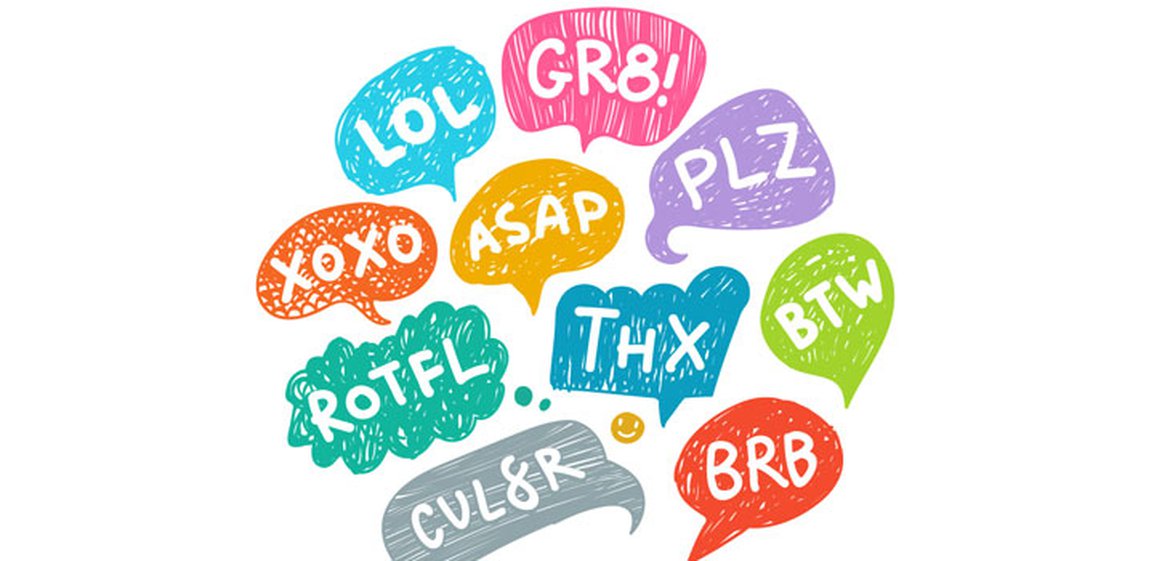A is for Abbreviation
Jan. 24, 2020

You know that feeling when you suddenly realize you’ve been wrong about something? Something you felt (rather smugly) you knew for sure? Well, I confess. All these years, I thought I knew what an acronym is. Turns out, I didn’t know squat. And now, to save you, gentle reader, from also having your world turned upside down, I am here to explain.
An acronym is a special type of abbreviation; it’s a word formed from the initial letters of a phrase. Think radar, which comes from “radio detection and ranging,” or scuba, from “self-contained underwater breathing apparatus” or laser, from “light amplification by stimulated emission of radiation.” (Thank god we shortened that one.)
While acronyms usually start out life as capitals (RADAR), eventually, they shrink down to lower case. Paradoxically, reducing the word in this way doesn’t diminish its power. Au contraire, this signals that the word has become a fully-fledged lexical item in its own right. In other words, the acronym becomes so common that we cease to think about each component part and instead accept and adopt the acronym as a new word.
That said, some acronyms are born as caps and stay as caps. NATO, IMAX, AIDS. Sometimes there’s a logical reason for this. In the case of AIDS, we use caps to distinguish the disease from aids, the people or devices that help us. In other cases, keeping the caps could be a deliberate branding choice. For still others…who knows?
Here’s the even trickier part. Acronyms are not be confused with initialisms. Nein, nein, nein. Like acronyms, initialisms are also made up of the first letters of a phrase, but they don’t generally form a new word. Each letter is enunciated separately.
Take VIP (very important person). We do not say “vip”, but rather V-I-P. Similarly, for ATM (automated teller machine), we say, A-T-M (not “atem”). And speaking of banks, are you, like me, vexed as to whether The Bank of Montreal wants us to refer to them as B-M-O or “beemo”? (RBC, CIBC and TD don’t seem to have this issue – initials all the way for those institutions.)
Acronyms and initialisms are both forms of abbreviations. Of course, there are hundreds, maybe millions, of common abbreviations that we use every day: Jan., Feb., Mar., St., Ave., Rd., Fri., Sat., Sun., fyi, aka, FAQ, DIY, YTD, etc. (yet another common abbreviation).
Again, these are true abbreviations, because the short form is used to represent the whole, but generally, the short form doesn’t create a new word. I say generally, because you may occasionally hear someone pronounce “Jan” or “Feb” as a word, but you’d never “Sept” or “Dec” said that way. (It’s all very capricious, this English language of ours.)
And now we come to the cool kids. Text Talk. Text Speak. Chat Speak. Internet Slang. Whatever you call it, there’s no denying that the internet has created an entirely new lexicon of abbreviations, and likely continues to do so even as I write this. In fact, as of November 2019, webopedia’s list of texting and online chat abbreviations boasted 1,500 entries.
Some, like OMG and LOL, have become ubiquitous. Others, like SEP – not the month, but “someone else’s problem” and OATUS “on a totally unrelated subject” are surely known to lots of you, but I have to admit they were new to me. I should also add that putting these abbreviations in all caps is already old school. Apparently only boomers would do such a thing.
Not surprisingly, since kids have largely been responsible for developing text talk, many abbreviations have to do with parents – or rather how to circumvent them: See PAL for “parents are listening”, PAW for “parents are watching”, KPC for “keep parents clueless”, and one of my favourites, P911 which means “parent alert.”
What to think about all these acronyms, initialisms, text talk and other abbreviations?
On the plus side, shortening a word is a matter of convenience. It can speed up communication and, with acronyms especially, make a large block of text easier to read. Acronyms also help to translate complicated scientific or technical concepts or organization names (NASA, for example), making them more understandable and familiar to the general public.
On the other hand, there’s no doubt that short forms can be clubby and exclusive. They are a form of code and assume a level of insider knowledge that not everyone necessarily shares.
So, before you take out your word pruning shears, consider these two questions:
- Who is your audience? Will they understand the meaning of your abbreviated word or phrase or your nifty set of initials?
- What are you writing? If it’s formal, best to avoid casual abbreviations. If it’s informal, and you have satisfied yourself that your audience will understand your code, then go ahead and shorten.
I think that’s enough B3 from me. Hope this wasn’t a CWOT. TTYL.*
Remember this:
Abbreviations, including acronyms and initialisms, can be useful – so long as they simplify, rather than confuse, your message.
*Translation: I think that’s enough blah, blah, blah from me. Hope this wasn’t a complete waste of time. Talk to you later.
